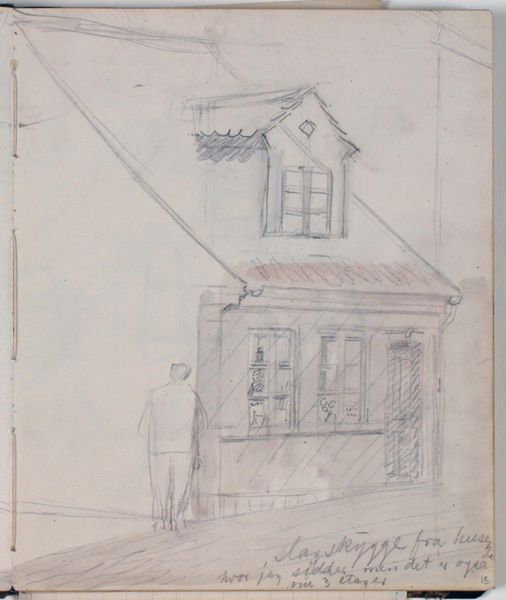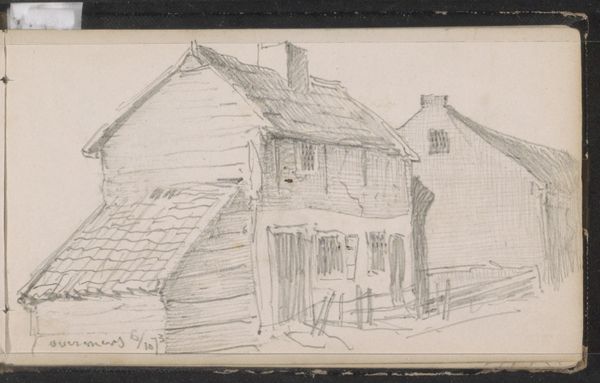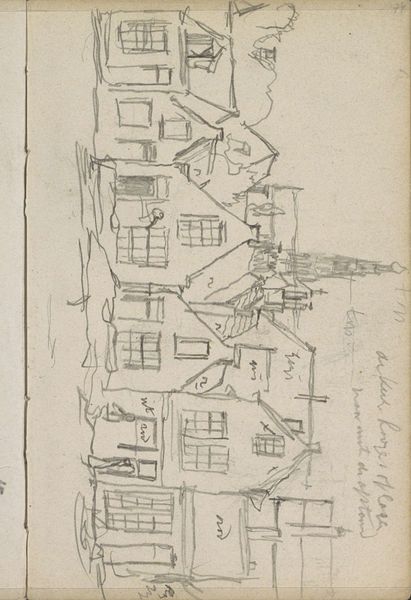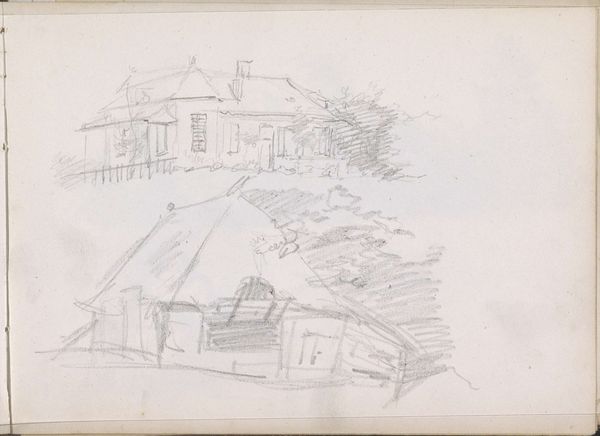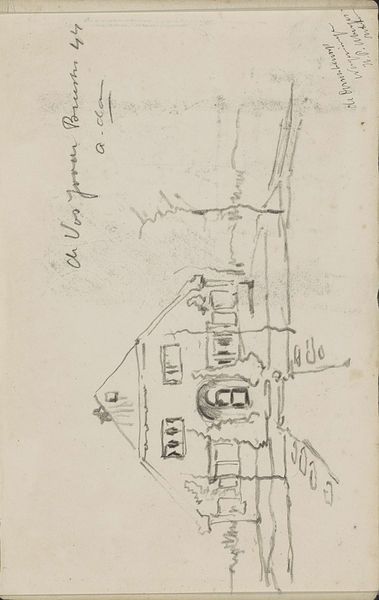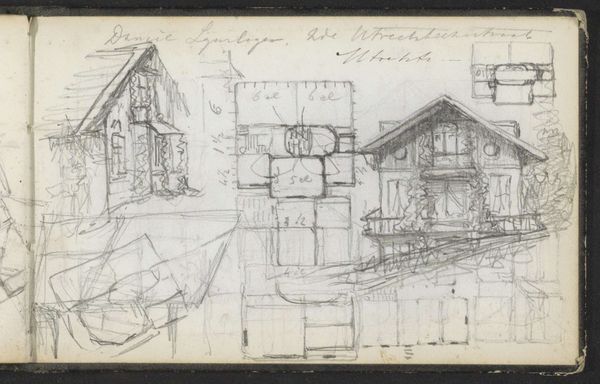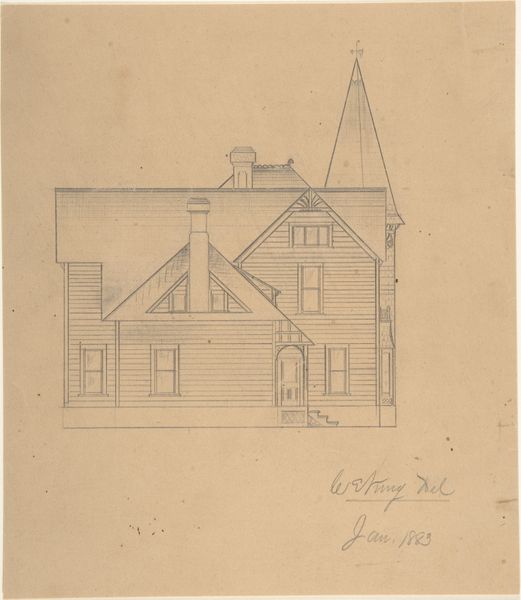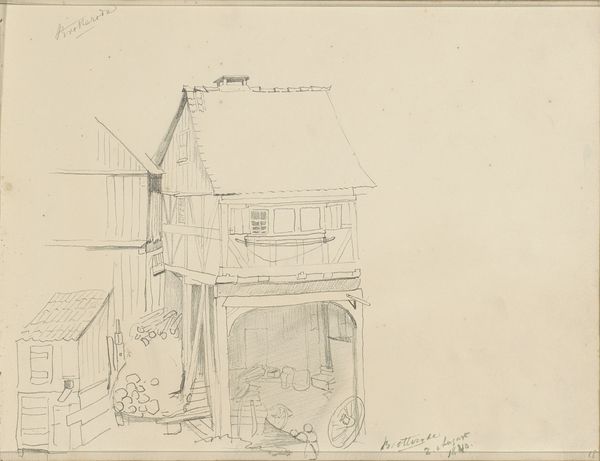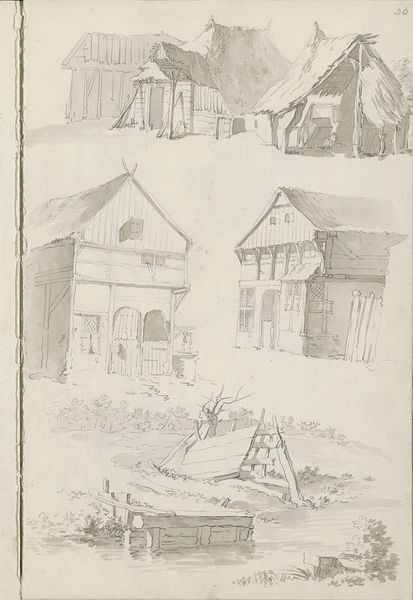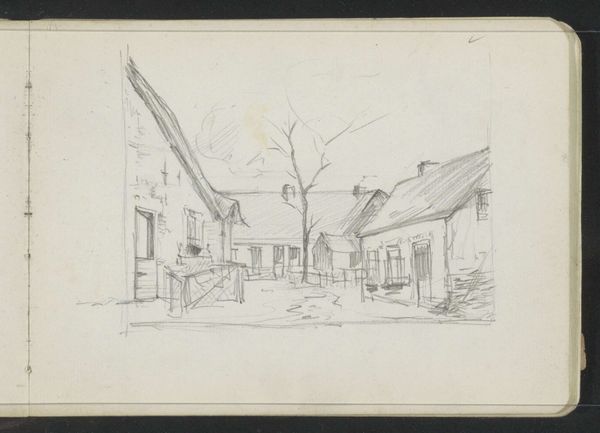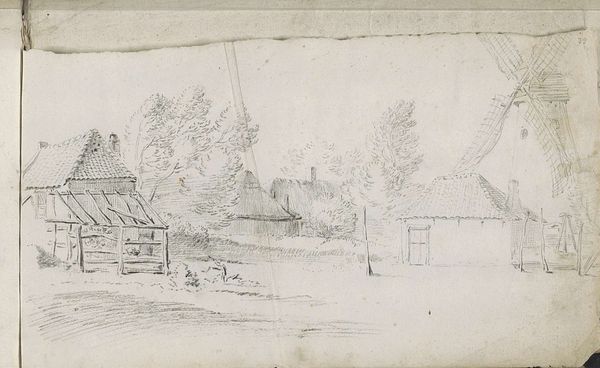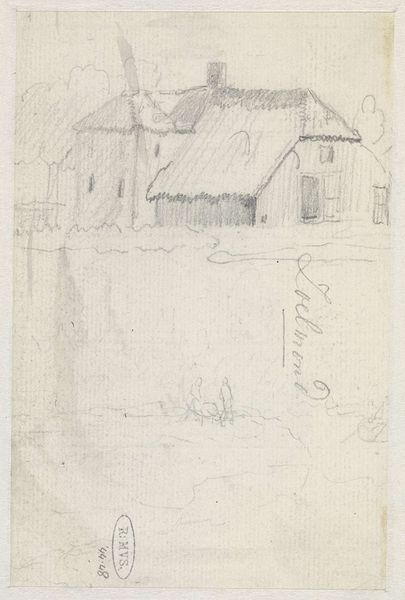
drawing, pencil
#
drawing
#
hand written
#
sketch book
#
incomplete sketchy
#
hand drawn type
#
personal sketchbook
#
sketchwork
#
detailed observational sketch
#
sketch
#
pencil
#
sketchbook drawing
#
cityscape
#
sketchbook art
#
initial sketch
Dimensions: 226 mm (height) x 185 mm (width) x 112 mm (depth) (monteringsmaal), 221 mm (height) x 184 mm (width) (bladmaal)
Curator: It's fascinating to look at Niels Larsen Stevns's "Studier af bygninger. Notater," dating from between 1930 and 1936. It's a page from a sketchbook, rendered in pencil. Editor: Ah, it's like stumbling upon someone's private thoughts! It feels incredibly intimate, doesn't it? There's a softness, almost a dreamlike quality to the light pencil strokes. I’m drawn in. Curator: Exactly. These aren't finished works; they are records of observation. The building itself, look at the detail in the roof tiles—they speak to a traditional style of architecture and perhaps the slow, deliberate pace of life in that era. Also consider the handwritten notes around the sketch. Editor: Yes! Those scribbles really pull you into the artist's process. It's more than just a study of a building, it becomes a study of seeing, of noticing the details that make a place unique. And I love the incompleteness, the hints of the surroundings that are only suggested. Curator: It highlights the act of remembering. The incomplete lines create an impression on memory instead of attempting reality. It prompts you to ask: What did Stevns want to remember? Why this specific view of this corner building? Editor: It reminds me of a half-forgotten memory, something I can almost grasp but not quite. This captures the feeling of remembering more than the look of the thing. The rough lines mimic the process of jogging one's mind, right? I wonder if these building types represented "home" in some archetypal sense. Curator: Perhaps they resonated with a deeper cultural understanding of shelter and belonging, influencing Stevns’s aesthetic and symbolic worldview. What's captured on the page has far broader cultural meaning beyond architectural aesthetics. Editor: I like the thought of buildings holding the stories, and this sketch allowing us to overhear one of those stories. It almost makes you believe you could draw them out yourself. Curator: Indeed. It suggests hidden connections between places and people, drawn out by the simple act of sketching. Editor: I'm seeing how even an unfinished piece, especially from a sketchbook, can offer us a powerful window into the past and into our own ways of seeing.
Comments
No comments
Be the first to comment and join the conversation on the ultimate creative platform.
